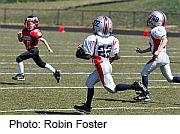Age <12 years at first exposure to repetitive head impacts linked to later-life brain alterations
FRIDAY, Aug. 14, 2015 (HealthDay News) — For former professional football players, earlier age of first exposure (AFE) to repetitive head impacts (RHI) correlates with later-life altered corpus callosum (CC) microstructure, according to a study published online July 22 in the Journal of Neurotrauma.
Julie M. Stamm, Ph.D., from the Boston University School of Medicine, and colleagues used magnetic resonance diffusion tensor imaging to examine the correlation between AFE to RHI through tackle football and later-life CC microstructure. Data were included from 40 retired National Football League (NFL) players, aged 40 to 65 years, who were divided into two groups based on their AFE to tackle football: before age 12 or at age 12 or older. Deterministic tractography was used to define and seed the whole CC and five subregions.
The researchers found that former NFL players in the AFE <12 group versus the ≥12 group had significantly lower fractional anisotropy in anterior three CC regions and had higher radial diffusivity in the most anterior CC region.
“These results suggest that incurring RHI during critical periods of CC development may disrupt neurodevelopmental processes, including myelination, resulting in altered CC microstructure and greater vulnerability to aging processes,” the authors write.
One author disclosed financial ties to the medical device industry and serves as an expert adviser to attorneys in cases pertaining to the long-term consequences of repetitive brain trauma.
Full Text (subscription or payment may be required)
Copyright © 2015 HealthDay. All rights reserved.








